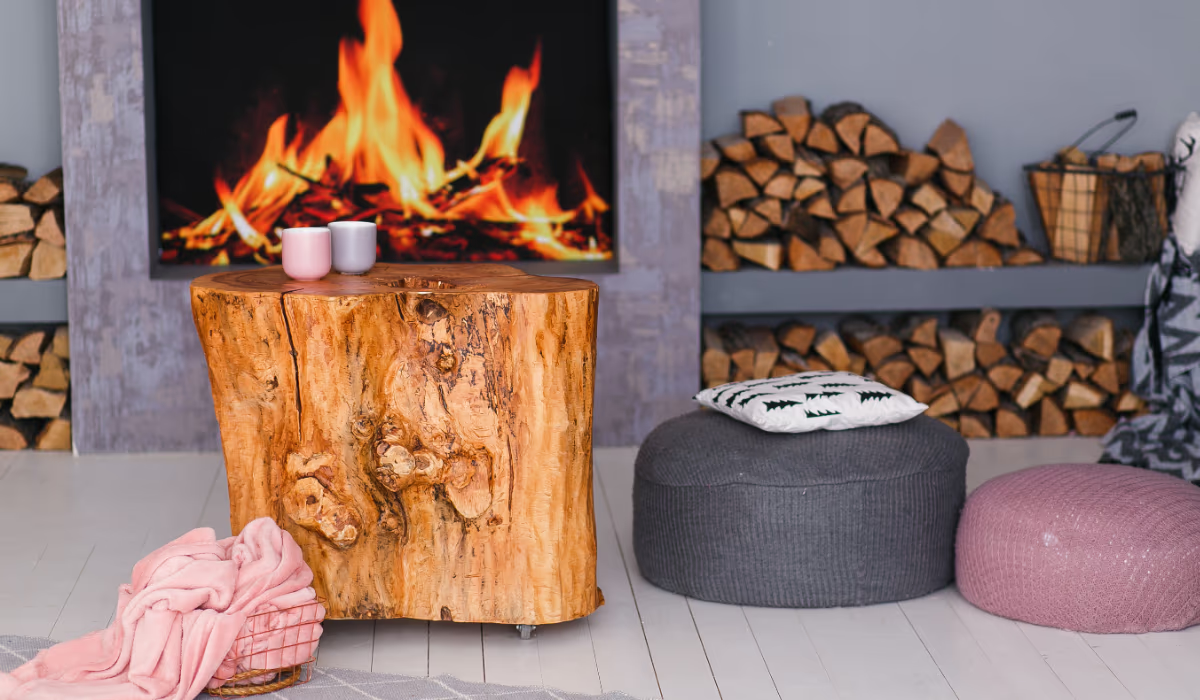Fireplaces remain a popular way to bring warmth, ambiance, and architectural beauty to homes. Yet there is no one “fireplace type” that suits every setting or budget. Different fireplaces vary in fuel, design, efficiency, installation cost, and maintenance. Whether you’re renovating or building new, knowing your options helps you choose the right fireplace for your space.
Traditional Wood-Burning Fireplaces
The classic fireplace uses wood logs in a masonry or prefabricated firebox. It delivers crackling sounds, visible flames, and a smoky aroma that many people love. However, it also demands chimney construction, regular cleaning (chimney sweeping), and fuel (split wood). Efficiency can vary unless you use high-efficiency inserts or modern designs.
Wood Fireplace Inserts & Grooves
If you already have a masonry fireplace, a wood insert is a way to upgrade. Inserts fit inside the existing firebox and improve efficiency by directing heat into your room rather than up the chimney. Some come with blowers and sealed doors to reduce draft and heat loss. It’s a retrofit solution that keeps the charm of a wood fire with better performance.
Gas Fireplaces: Natural Gas & Propane
Gas fireplaces run on natural gas or propane, and they offer clean, convenient operation. With the flip of a switch or push of a button, you get instant flame without the mess or fuss of wood. They require venting (direct vent or natural vent) or can use ventless systems in some jurisdictions. Because they don’t require wood storage or frequent cleaning, they are lower maintenance.
Gas Fireplace Inserts & Logs
Much like wood inserts, gas inserts allow you to convert an existing fireplace into a gas unit. A gas log kit can be installed in an open hearth to create realistic flame effects. Inserts improve efficiency by better directing heat, while logs offer a simpler replacement if venting is already present. Gas options are popular for retrofits where rebuilding the entire fireplace is not feasible.
Electric Fireplaces
Electric fireplaces are among the most flexible types of fireplaces. They plug into a standard outlet or install into walls, mantels, or media walls. Their “flames” are simulated (often by LED lighting, mirrors, or screens) rather than real combustion. While they don’t produce real fire or true heat like wood or gas, they offer warmth via electric resistance heating and require minimal maintenance.
Ethanol / Bioethanol Fireplaces
Ethanol fireplaces burn bioethanol fuel, producing real flame without requiring a chimney or venting. They are clean-burning and simple to install. Many models are wall-mounted or freestanding and work well in modern interiors. Their heat output may not be as strong as gas or wood, but they provide a realistic flame look in locations where venting isn’t possible.
Pellet Stoves & Pellet Fireplace Inserts
Pellet fireplaces burn compressed wood pellets fed automatically from a hopper. The fire is fed, controlled, and monitored by electronics, allowing steady heat and lower emissions. Pellet stove installation often requires a small exhaust flue but not a full traditional chimney. Inserts are available for existing fireboxes, converting them to more efficient pellet-burning systems.
Ventless / Ventless & Vent Options
Some gas or ethanol fireplaces operate without external venting, called ventless or vent-free units. They release combustion products directly into the room, so they depend on strict regulation and careful installation to ensure safety and indoor air quality. Other fireplaces (wood, gas, pellet) often use vented systems (chimneys, flues, or direct vents) to remove smoke and byproducts outside.
Outdoor Fireplaces & Fire Pits
Not all fireplaces are indoors. Outdoor fireplaces or masonry fire pits let you enjoy fire feature in your backyard, patio, or outdoor living space. These units use wood, gas, or sometimes mixed fuels and bring ambiance and warmth to outdoor settings. Design elements — like firewalls, mantels, seats, or logs — help integrate them into outdoor living areas.
Choosing the Right Fireplace for You
Your ideal fireplace depends on factors like climate, fuel availability, maintenance willingness, home layout, and design style. If you have easy access to wood and want a traditional look, a wood or wood-insert fireplace may suit you. For convenience and low maintenance, gas or electric options shine. For modern spaces without venting options, ethanol or ventless designs provide flexibility. Outdoor fireplaces add charm to your garden or patio. Always check local building codes, ventilation and safety requirements, and professional installation needs.
Conclusion
Fireplace types range from traditional wood burning to modern electric and ethanol systems, each with strengths and tradeoffs. Inserts, gas and ventless options let you retrofit or install where chimneys don’t reach. Outdoor fireplaces expand fire’s allure beyond the interiors. Your best choice balances aesthetics, function, maintenance, and local constraints. With careful planning, your selected fireplace becomes a focal point that delivers warmth, comfort, and style.
FAQs
Which fireplace type is most efficient?
Insert and modern gas or pellet units tend to be more efficient than open masonry wood fireplaces because they lose less heat up the chimney and channel more into the living space.
Do ethanol fireplaces give off heat?
Yes, but less than traditional fireplaces. They mainly serve as decorative flames with supplemental heat for smaller spaces.
Can I convert a wood fireplace to gas or electric?
Yes. With proper venting, insert or log kits, and safety checks, many wood fireplaces can be converted to gas or electric systems.
What ventilation is needed for a gas fireplace?
It depends on the type: direct vent, natural vent (B vent), or ventless systems that require no outside flue, depending on local codes.
Are outdoor fireplaces subject to the same rules as indoor?
They often are subject to fire codes and local regulations, especially regarding clearances, materials, and proximity to structures. Always check local building rules before building.







